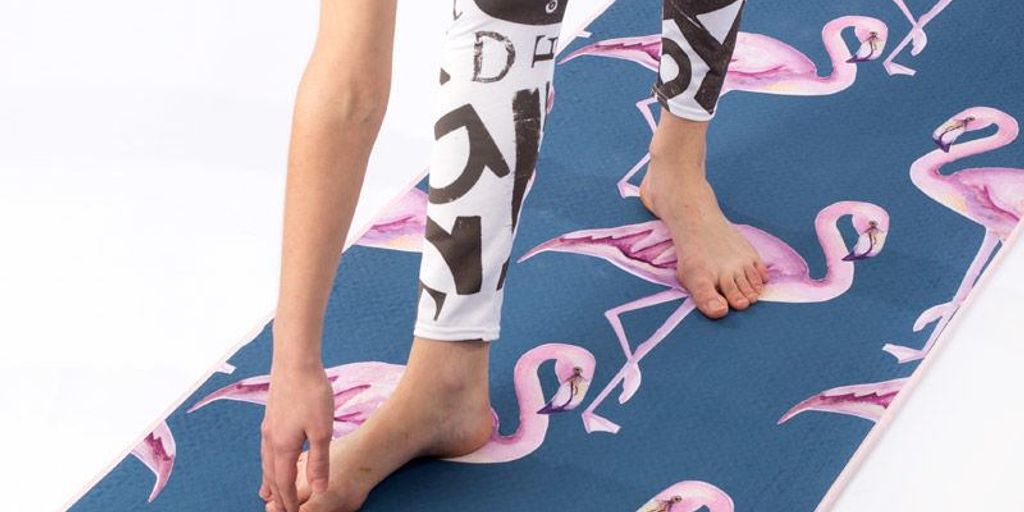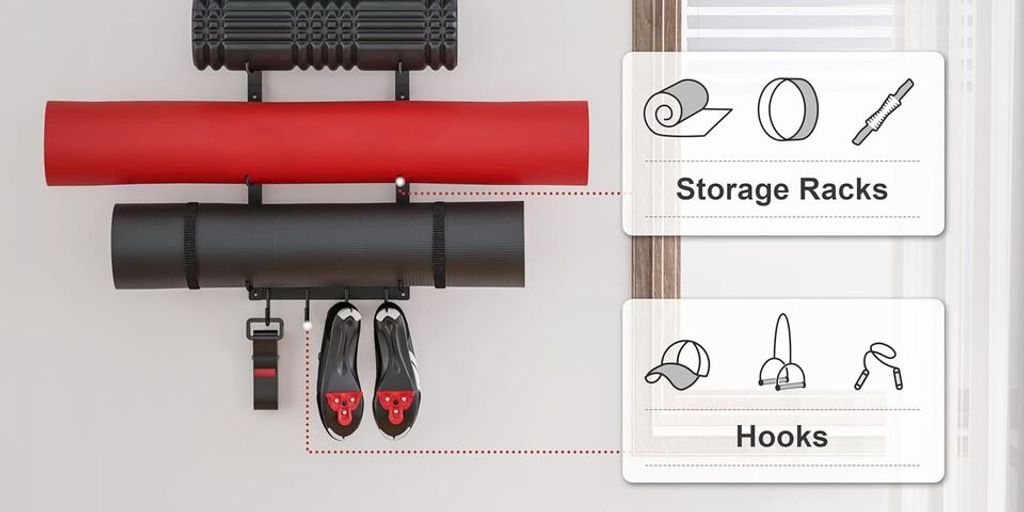
Choosing the Perfect Yoga Mat: A Comprehensive Guide for Beginners
Choosing the right yoga mat is super important, especially if you're just starting out. The right mat can make your practice more comfortable and enjoyable. This guide will help you understand the different types of mats, what to look for in terms of size and durability, and how to choose one that fits your budget and practice style.
Key Takeaways
- Learn about different materials, thicknesses, and textures of yoga mats.
- Understand the importance of mat size and portability.
- Find out how to assess the durability and longevity of a yoga mat.
- Consider your budget and explore affordable, mid-range, and high-end options.
- Discover additional features like alignment guides and eco-friendly materials.
Understanding Different Types of Yoga Mats
Material Varieties
Yoga mats come in a range of materials, each offering unique benefits. PVC mats are durable and provide excellent grip, but they are not eco-friendly. Rubber mats are a popular choice for their natural feel and good traction. TPE mats are a newer option, combining the best of both worlds with their eco-friendliness and comfort.
Thickness and Cushioning
The thickness of a yoga mat can greatly affect your practice. Standard mats are about 1/8 inch thick, providing a balance between stability and cushioning. Thicker mats, around 1/4 inch, offer more comfort for poses that put pressure on your joints. However, they might make balancing poses more challenging.
Texture and Grip
The texture of a yoga mat influences its grip and feel. Mats with a textured surface provide better traction, which is essential for maintaining poses without slipping. Smooth mats, while comfortable, may not offer the same level of grip, especially in sweaty conditions. Consider your practice style and environment when choosing the texture of your mat.
Choosing the right yoga mat involves understanding the different materials, thicknesses, and textures available. This ensures you find a mat that supports your practice and enhances your comfort.
Evaluating the Importance of Mat Size
Standard Dimensions
When choosing a yoga mat, it's essential to consider the standard dimensions. Most mats are around 68 inches long and 24 inches wide, which suits most people. However, if you're taller, you might need a longer mat to ensure your entire body fits comfortably during poses.
Extra Long and Wide Options
For those who need more space, extra long and wide mats are available. These mats provide additional room for stretching and moving, making your practice more enjoyable. Extra space can be crucial for those who feel cramped on a standard mat.
Portability Considerations
Portability is another important factor. If you plan to carry your mat to classes or travel with it, you'll want a mat that's lightweight and easy to roll up. Some mats come with carrying straps or bags, which can make transportation easier. Lightweight mats are especially useful for those who are always on the go.
Choosing the right size yoga mat can significantly impact your practice, providing the comfort and support you need to focus on your poses and breathing.
Assessing Durability and Longevity
Wear and Tear Resistance
When choosing a yoga mat, it's important to think about how long it will last. Mid-range mats like the Liforme Blue Yoga Mat and Lululemon's The Mat 5mm generally last around 1 year with consistent use. These mats offer a good balance between durability and comfort. However, if you practice yoga daily, you might need to replace your mat more often.
Cleaning and Maintenance
Keeping your yoga mat clean is key to making it last longer. Regular cleaning helps prevent wear and tear. Use a gentle cleaner and a soft cloth to wipe down your mat after each use. Avoid using harsh chemicals, as they can damage the mat's surface. Let your mat air dry completely before rolling it up to store.
Environmental Impact
Consider the environmental impact of your yoga mat. Some mats are made from eco-friendly materials like natural rubber or jute. These materials are biodegradable and better for the planet. On the other hand, mats made from PVC can take hundreds of years to break down. Choosing a mat made from sustainable materials can help reduce your carbon footprint.
A durable yoga mat not only supports your practice but also helps you save money in the long run by reducing the need for frequent replacements.
Considering Your Budget
Affordable Options
For those just starting out, there are plenty of budget-friendly yoga mats available. These mats may not have all the bells and whistles, but they can still provide a good foundation for your practice. Look for mats made from PVC or basic foam, as these materials are often less expensive. You can find decent options in the $10-$20 range.
Mid-Range Choices
If you're willing to spend a bit more, mid-range yoga mats offer a balance of quality and cost. These mats often feature better materials like TPE or natural rubber, providing improved grip and durability. Prices for mid-range mats typically range from $30 to $60. This category is ideal for those who practice regularly and want a mat that will last longer.
High-End Investments
For the dedicated yogi, high-end yoga mats are worth the investment. These mats are made from premium materials and often include extra features like alignment guides or eco-friendly components. Expect to pay anywhere from $70 to $120 or more for these top-tier options. High-end mats are designed to withstand frequent use and offer superior comfort and support.
When choosing a yoga mat, consider how often you practice and what features are most important to you. Investing in a quality mat can enhance your practice and provide long-term benefits.
Exploring Additional Features
When choosing a yoga mat, there are several extra features to consider that can enhance your practice.
Alignment Guides
Some mats come with alignment guides to help you position your hands and feet correctly. These guides can be especially helpful for beginners who are still learning the poses.
Eco-Friendly Materials
If you care about the environment, look for mats made from eco-friendly materials. These mats are often made from natural rubber or other sustainable resources. Choosing an eco-friendly mat can help reduce your carbon footprint.
Non-Toxic and Hypoallergenic Options
For those with allergies or sensitivities, non-toxic and hypoallergenic mats are a great choice. These mats are made without harmful chemicals, making them safer for you and the planet.
When selecting a yoga mat, consider these additional features to find one that best suits your needs and values.
Finding the Right Mat for Your Practice Style
Choosing the right yoga mat depends on your practice style. Different styles need different features to help you get the most out of your sessions. Here are some tips to help you pick the best mat for your needs.
Hot Yoga Mats
Hot yoga makes you sweat a lot, so you need a mat that can handle it. Look for mats with good grip and moisture-wicking properties. A mat with a textured surface can help keep you from slipping. Some mats are even made to get stickier when wet, which is perfect for hot yoga.
Travel-Friendly Mats
If you travel often, you need a mat that's easy to carry. Travel mats are usually thinner and lighter, making them easy to fold or roll up. They might not have as much cushioning, but they are great for practicing on the go. Portability is key when you're always on the move.
Mats for Home Practice
For home practice, you can choose a mat that is thicker and more cushioned. This type of mat is great for comfort and support during longer sessions. You don't have to worry about carrying it around, so you can focus on finding one that feels good under your hands and feet.
When picking a yoga mat, think about where and how you will use it the most. This will help you find the perfect mat for your practice style.
Personalizing Your Yoga Mat
Color and Design
Choosing the right color and design for your yoga mat can make your practice more enjoyable. Whether you prefer calming blues or vibrant reds, the color of your mat can set the tone for your session. A visually appealing mat can also motivate you to practice more regularly.
Custom Prints
Custom prints allow you to add a personal touch to your yoga mat. You can choose from a variety of patterns, symbols, or even inspirational quotes. This makes your mat unique and can serve as a reminder of your personal journey in yoga.
Brand Preferences
Different brands offer various features and qualities in their yoga mats. Some brands are known for their durability, while others are celebrated for their eco-friendly materials. Selecting a brand that aligns with your values and needs can enhance your overall yoga experience.
Personalizing your yoga mat is not just about aesthetics; it's about creating a space that feels uniquely yours and supports your practice in the best way possible.
Make your yoga mat truly yours by adding a personal touch! Whether you prefer vibrant colors or calming designs, we have something for everyone. Check out our wide range of customizable options and find the perfect mat that speaks to you. Visit our website today and start personalizing your yoga experience!
Conclusion
Choosing the right yoga mat can make a big difference in your practice. It's important to think about what you need, like the material, thickness, and grip. Don't forget to consider your budget too. With the right mat, you'll be more comfortable and enjoy your yoga sessions more. Take your time to find the perfect one for you, and happy practicing!
Frequently Asked Questions
What is the best material for a yoga mat?
The best material depends on your needs. PVC mats offer good grip, while rubber and cotton mats are eco-friendly.
How thick should my yoga mat be?
A standard mat is about 1/8 inch thick. If you need more cushioning, look for a mat that's 1/4 inch thick.
Can I use a yoga mat for other exercises?
Yes, you can use a yoga mat for exercises like Pilates or stretching. Just make sure it's thick enough for comfort.
How do I clean my yoga mat?
You can clean your mat with a mix of water and mild soap. Wipe it down and let it air dry.
Are expensive yoga mats worth it?
Expensive mats can be worth it if you practice often. They usually last longer and have better grip.
What size yoga mat should I get?
A standard mat is 68 inches long. If you're taller, you might want a longer mat, like 72 inches or more.


